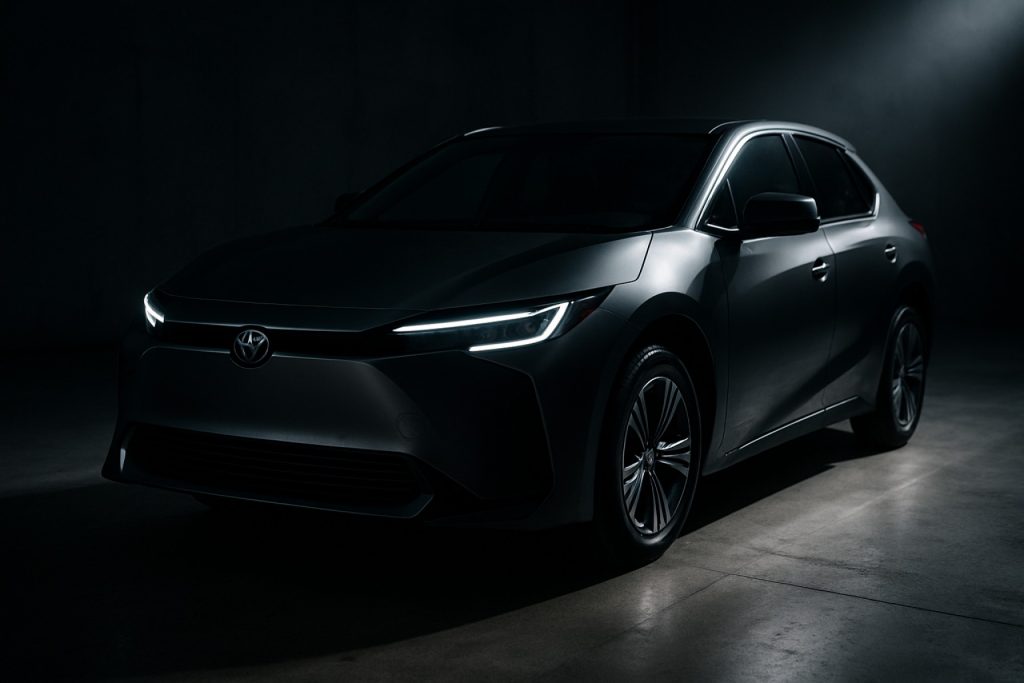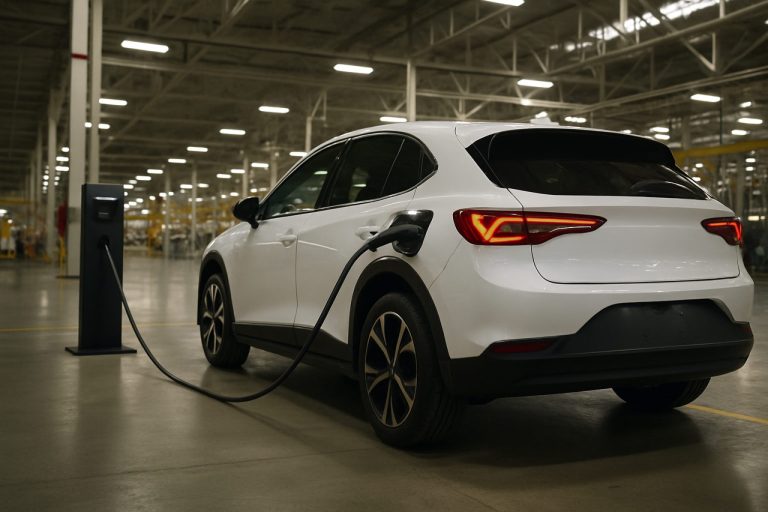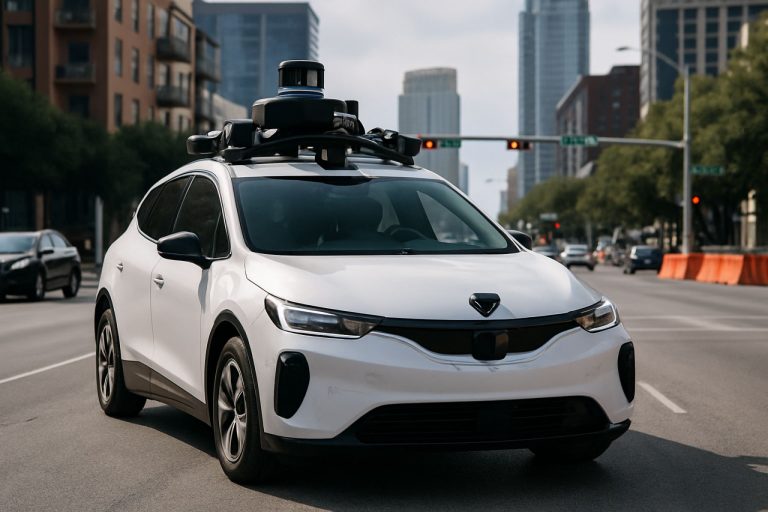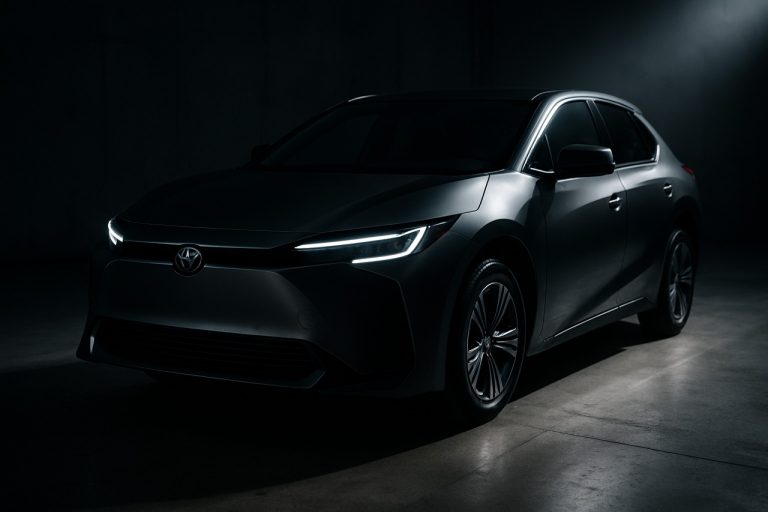
- Toyota is prioritizing plug-in hybrids, aiming for them to comprise 20% of global sales by 2030.
- Plug-in hybrids blend electric driving with a backup gasoline engine, easing concerns about charging infrastructure gaps and supporting emissions reduction goals.
- Their smaller batteries use fewer rare minerals, making production more cost-effective and environmentally responsible compared to full EVs.
- Plug-in hybrids continue gaining popularity, especially in challenging markets with long distances, colder climates, and uneven EV charger networks.
- Toyota leverages decades of hybrid experience, offering models renowned for reliability, efficiency, and adaptability as global regulations tighten.
- Toyota balances its plug-in hybrid focus with parallel investments in hydrogen fuel cells and solid-state batteries, ensuring long-term innovation.
https://youtube.com/watch?v=xG1zuIXC9dc
Under steel-blue skies on quiet test tracks in Japan, a familiar automotive name is quietly redrawing the road map for tomorrow’s drivers. Toyota, the world’s largest carmaker by volume, is orchestrating a subtle but powerful shift—one that could define the next decade of driving.
While much of the industry has chased the shimmer of all-electric vehicles, Toyota has been quietly skeptical. The company saw what others ignored: charging infrastructure gaps, wavering consumer confidence, and global markets that can’t pivot overnight to battery-only cars. Now, as some EV pioneers pull back on their own ambitious timelines, Toyota is charging ahead with a different vision: the renewed ascendancy of the plug-in hybrid.
Bold Targets, Calculated Risks
Toyota plans to make plug-in hybrids 20% of its global sales by 2030—a figure that would put millions of these adaptable vehicles on the road each year. The company is pouring resources into research and development, guiding new models to production lines faster than many rivals. This focus isn’t just a hedge; it’s a fundamental belief that the future of mobility lies in balance and pragmatism.
Why Plug-In Hybrids Stand Out
Plug-in hybrids—cars that combine an internal combustion engine with a substantial battery pack—can travel meaningful distances on electricity alone yet switch seamlessly to gasoline for longer journeys. In markets where reliable, quick-charging stations are still rare and energy grids run on fossil fuels, plug-in hybrids offer a bridge to zero-emission ambitions.
Their batteries, far smaller than those in pure EVs, use fewer rare minerals and cost less to produce. This practicality will matter more as governments worldwide ramp up emissions regulations and consumers face tough choices about what to buy next.
Betting on Main Street, Not Just Mainstream
Toyota’s not alone in recalibrating expectations. According to well-established resources like the International Energy Agency (IEA), global sales of plug-in hybrids are still climbing, especially in regions where large geographic distances and cold climates limit the effectiveness of battery-only cars. In North America, plug-in hybrid sales surged by double digits in 2023.
Toyota’s best-selling models—the Prius Prime and RAV4 Prime—often vanish from dealer lots as quickly as they arrive. Meanwhile, the company’s engineers are refining battery chemistries, squeezing out more electric range, and focusing relentlessly on reliability.
Lessons from the Past, Eyes on the Horizon
With over twenty years of hybrid-building history, Toyota knows how to wring efficiency from both battery and gasoline. This hybrid expertise, coupled with a reputation for bulletproof durability, gives the automaker a unique edge as the world creeps toward greener motoring.
Yet, this isn’t a backward move. Toyota is still developing hydrogen fuel cell vehicles and investing in solid-state battery tech. But as the electric vehicle market endures growing pains—cost barriers, charger lines, and shifting subsidies—the plug-in hybrid strategy stands as both a safety net and a springboard.
The Takeaway
Automotive revolutions rarely happen in a straight line. As the global transition to clean mobility hits speedbumps, Toyota’s calculated gamble on plug-in hybrids could provide the stability and real-world practicality that many drivers crave. In a world that doesn’t change overnight, the company’s blend of innovation and caution may well determine what’s parked in driveways for years to come.
For more on trends shaping the future of mobility and energy, visit the International Energy Agency and major automaker sites like Toyota. The road ahead is anything but predictable, and the next chapter is only just beginning.
Is Toyota’s Plug-In Hybrid Gambit the Smartest Bet in an Uncertain Auto Market? Top Secrets, Life Hacks, and Expert Insights Revealed
Toyota Plug-In Hybrid Revolution: Deeper Insights, Industry Trends, and Must-Know Facts
Expanded Facts Not Fully Explored in the Source
1. Toyota Dominates Hybrid Patents and R&D
– Toyota holds over 24,000 patents related to electrified vehicles, giving it a technological lead in hybrid and plug-in hybrid systems ([source](https://global.toyota)).
– Its new fifth-generation hybrid systems boast up to 20% better efficiency and lower emissions than earlier models.
2. Global Regulatory Landscape is Favorable for Plug-In Hybrids
– The European Union’s proposed Euro 7 emissions standards offer transitional credits for plug-in hybrids, extending their viability as automakers pivot from pure ICE to EVs.
– China, the world’s largest car market, continues to provide some incentives for PHEVs (Plug-in Hybrid Electric Vehicles), especially in Tier 2 and Tier 3 cities.
3. Charging Infrastructure Challenges Hamper Pure EV Growth
– According to the IEA, even in developed regions like the US and EU, 30-40% of residents lack access to reliable home charging, complicating full EV adoption.
– PHEVs sidestep public infrastructure issues; almost 70% of plug-in hybrid owners primarily charge at home, increasing convenience and reducing “charger anxiety.”
4. Environmental Impact is Nuanced
– Life cycle analyses have demonstrated that plug-in hybrids typically emit 30–60% less CO₂ than standard gasoline vehicles, especially if drivers maximize electric-only operation.
– However, real-world CO₂ savings depend heavily on driver habits and local grid cleanliness.
5. Battery Sizing: The Sustainability Angle
– The average PHEV battery uses 10–15 kWh of lithium-ion cells, compared to 60–100 kWh in a typical full EV. This means lower demand for scarce raw materials (lithium, cobalt), reducing environmental and ethical concerns in sourcing.
How-To: Getting the Most from Your Toyota Plug-In Hybrid
– Charge Overnight: Take advantage of lower nighttime rates and guarantee a full battery each morning.
– Preheat/Cool Your Vehicle While Plugged In: Many Toyotas allow you to condition the cabin using grid electricity, not your battery or gas.
– Monitor Your Driving Split: Use Toyota’s onboard computer to aim for electric-only operation on commutes under 40 miles.
Life Hacks and Real-World Use
– Use PHEVs for Business Fleets: Combine low running costs with flexibility—great for companies operating in suburban or rural areas.
– Vacation Flexibility: No anxiety over range or sparse charging networks on road trips, unlike full EVs.
– Homeowners Without Garage Charging: PHEVs can use regular 120V outlets, no expensive home infrastructure required.
Reviews & Comparisons: Toyota vs. The Competition
– Toyota RAV4 Prime: Up to 42 miles of electric range (top-tier among non-luxury PHEVs), AWD standard, 0-60 mph in 5.7 seconds.
– Prius Prime: Up to 44 miles of EV range; praised for efficiency and reliability.
– Ford Escape PHEV / Hyundai Tucson Plug-In: Similar range (around 35–38 miles), but Toyota models consistently rank higher in reliability ([Consumer Reports](https://www.consumerreports.org/)).
Industry Forecasts & Trends
– According to the IEA, global sales of plug-in hybrids will increase from 3.2 million units in 2023 to an estimated 7–8 million by 2030 as automakers diversify electrification strategies.
– Survey data from JD Power (2024) shows consumer PHEV satisfaction is rising, especially for households transitioning from pure gasoline vehicles.
Controversies & Limitations
– Regulatory Scrutiny: Some governments (e.g., Germany, UK) have criticized PHEVs for sometimes underdelivering on real-world CO₂ reductions—often when owners don’t regularly plug in.
– Tax Incentives in Flux: US federal tax credits currently give up to $7,500 for eligible PHEVs, but planned changes may tighten eligibility based on battery sourcing and assembly.
Features, Specs & Pricing
– Toyota RAV4 Prime: MSRP ~$43,000 (before incentives), 18.1 kWh battery, up to 600 miles total range (EV + gas).
– Prius Prime: MSRP ~$33,000, 13.6 kWh battery, latest gen includes advanced safety features and larger touchscreen.
Security & Sustainability
– Battery Warranty: Toyota offers up to 10 years/150,000 miles on hybrid batteries in North America, reflecting confidence in durability.
– Sustainable Manufacturing: Toyota’s global plants increasingly use renewable energy, aligning with long-term sustainability targets ([Toyota Environmental Challenge 2050](https://global.toyota)).
Insights & Predictions
– Solid-State Battery Pivot: Toyota aims to introduce solid-state batteries commercially by 2027–2028, promising even faster charging and greater range, which could further shift the PHEV/EV balance.
– Used PHEV Market Growth: As new models saturate, expect a dramatic uptick in affordable secondhand plug-in hybrids.
Tutorials & Compatibility
– Level 1 vs. Level 2 Charging: Most Toyota PHEVs recharge fully from a standard 120V home outlet overnight; for faster charging, a 240V (Level 2) setup cuts charge time in half.
– App Integration: Toyota’s “Connected Services” apps allow remote monitoring, pre-conditioning, and charging scheduling.
Pros & Cons Overview
Pros
– Eliminates range anxiety.
– Lower upfront cost than EVs.
– Minimal charging infrastructure needed.
– High resale values and durability.
Cons
– Not fully zero-emission unless consistently charged.
– Less exciting driving experience vs. sporty EVs.
– Tax credits may be reduced soon in major markets.
—
Most Pressing Questions Answered
Q1: Are Toyota plug-in hybrids reliable?
A: Yes. Toyota’s long track record and industry-leading hybrid battery warranties underscore exceptional reliability.
Q2: What’s the maintenance cost vs. a full EV or gasoline car?
A: Lower than gasoline cars (less brake/engine wear) and comparable to EVs. Routine maintenance involves both engine and EV components, but intervals are generally longer.
Q3: Can I easily find charging for my PHEV?
A: Yes. Unlike many full EVs, Toyota PHEVs can be easily charged at home using standard outlets—public charging is purely optional.
Q4: Is now a good time to buy a Toyota plug-in hybrid?
A: With rising EV costs, supply constraints, and changing incentives on the horizon, this is an optimal window for plug-in hybrid buyers. Incentives are still generous, and residual values remain high.
—
Actionable Recommendations & Quick Tips
– Charge Regularly: To maximize both fuel savings and CO₂ reduction, plug in every night, even for short commutes.
– Monitor Tax Credits: Stay updated on federal and local PHEV incentives to maximize savings.
– Explore Toyota’s RAV4 Prime and Prius Prime: Test drive both to match your range and cargo needs—each sets the class benchmark.
– Plan for the Future: If you anticipate better charging infrastructure within 5–7 years, a PHEV offers you a smooth bridge to eventual full EV ownership.
For more authoritative automotive insights and future forecasts, consult the International Energy Agency and Toyota.
—
Bottom Line:
Toyota’s plug-in hybrids provide a practical, reliable, and eco-smart alternative as the auto world transitions to full electrification. Maximizing their value requires charging discipline and a clear understanding of evolving policy and technology trends. Wise buyers can future-proof their mobility—and wallets—by considering PHEVs now.



